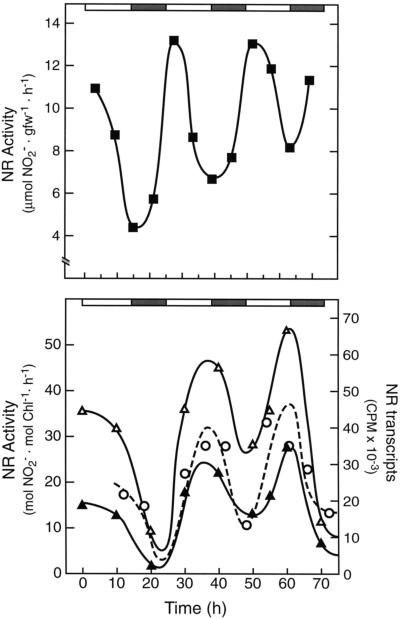Figure 4.
NR has a circadian pattern in transcript and protein levels, which is responsible for an endogenous rhythm in NR activity in tomato. The light and dark bars above the figure represent day and subjective night periods, respectively. Top, NR activity (▪) was assayed under in vivo conditions (see Methods) over a 3-d, constant light (450 μmol quanta m−2 s−1) and temperature (26°C) time course. The experiment was repeated twice, and the results shown are representative. gfw, Grams fresh weight. Bottom, NR activity was assayed under in vitro conditions in the absence (▵) and presence (▴) of Mg2+. The absence of Mg2+ prevents the Mg2+-dependent binding of 14-3-3-type inhibitor proteins to phospho-NR, thereby revealing changes in NR activity that are caused by changes in enzyme level (see text). Total leaf RNA was isolated from tomato leaves under constant-light circadian conditions and probed with a dCTP32-labeled tobacco nia-2 cDNA (○). The radioactivity was quantified on a phosphor imager. All experiments were repeated at least three times and representative results are shown. Chl, Chlorophyll.

